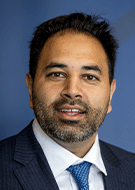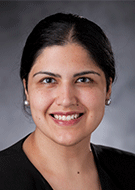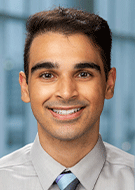Preparing Radiology Trainees for AI and ChatGPT
Work lies ahead to keep students abreast of the latest technologies





This story is part of an RSNA News special focus on the new optimized and engaging education of the next generation of radiologists. Read part two, part three and part four.
AI, and more recently, ChatGPT, an AI-driven large language model, are becoming ubiquitous in radiology. Ensuring that the next generation of radiology trainees is prepared for this next wave of disruptive technology can be a challenge.
“We recognize that AI is going to significantly impact the future of radiology and shape the way people think, learn and interact. We have tried our best to incorporate it into our educational pedagogy,” said Omer Awan, MD, MPH, professor and associate vice chair of education in the Department of Radiology at University of Maryland School of Medicine in Baltimore.“In addition, ChatGPT is very exciting and certainly has a lot of potential. It can often provide meaningful differential diagnoses of certain topics and even offer differential diagnoses for certain imaging findings, such as consolidation of the lung.”
Mark Mullins, MD, PhD, vice chair for education and professor in the Department of Radiology and Imaging Sciences, Emory University School of Medicine, Atlanta, said he always keeps in mind that the radiology basics never really change and remain the most important of radiological training and education.
“The only constant is change, but you have to focus on foundational education and have good systems to be able to support people,” Dr. Mullins said. “There’s a reason they call them fundamentals. Being great clinically and being a good team member, all of those things will still help you in an AI world. It may be different in some version of the future, but a lot of those skill sets will still matter.”
Along with basic radiology fundamentals, Manisha Bahl, MD, MPH, associate professor of radiology at Harvard Medical School and Massachusetts General Hospital in Boston, believes a foundational AI education is also important.
“I believe that all radiology training programs should provide foundational AI education, including topics such as fundamental concepts and clinical validation and application of AI models,” Dr. Bahl said. “A recent Academic Radiology multi-institutional survey of radiology residents in the U.S. showed that more than 80% of radiology residents believe that AI education should be incorporated into their residency curriculum, with specific focus on how to determine whether or not an AI tool is working as intended."
Watch Ali Tejani, MD, third-year-resident, talk about the ways residents can approach AI and ChatGPT as they learn:
“Residency and fellowship programs are still trying to figure out the best way to prepare trainees for the ever-changing landscape of AI in medicine."
TESSA COOK, MD, PHD
Adapting As Technology Changes
Educational initiatives offered by radiology residency programs are preparing trainees to adopt, evaluate and use AI tools in clinical practice, according to Dr. Bahl.
“Some radiology residency programs offer lecture series on AI, in-house/institutional courses on subjects like informatics, small group discussions and hands-on AI laboratories, in addition to access to resources such as national courses and online videos,” Dr. Bahl said. “My institution offers a lecture series and, for senior radiology residents, a focused data science pathway. Trainees also gain experience in using AI algorithms during their day-today rotations.”
As AI and ChatGPT continue to evolve, some radiology education programs encourage trainees to take advantage of outside programs and curricula.
“Residency and fellowship programs are still trying to figure out the best way to prepare trainees for the ever-changing landscape of AI in medicine,” said Tessa Cook, MD, PhD, associate professor of radiology at the Hospital of the University of Pennsylvania and director of the Imaging Informatics Fellowship at the university in Philadelphia. “The National Imaging Informatics Curriculum and Course-Radiology (NIICRAD), co-sponsored by RSNA and the Society for Imaging Informatics in Medicine, also provides dedicated training in informatics and AI.”
NIIC-RAD, which offers imaging informatics education to trainees and practicing radiologists around the world, covers fundamentals like clinical workflow and patient centric radiology and other topics, such as data science, mission learning and 3D printing.
From a trainee’s perspective, when radiology programs are slow to meet the demand of changing technologies, outside supplemental courses and programs can provide instruction on how to incorporate these into workflow.
“National efforts, like the RSNA/SIIM NIIC-RAD course and RSNA Imaging AI Certificate help address some of these gaps. However, work is needed to help standardize a curriculum for all trainees,” said Ali S. Tejani, MD, third-year resident at UT Southwestern Medical Center, Dallas and deputy editor of the Radiology: Artificial Intelligence podcast.
Dr. Tejani helped establish a formal informatics and AI curriculum at UT Southwestern including foundational education for all students and an advanced track option for those who want to know more. In the advanced track, Dr. Tejani and faculty host problem-based workshops that allow trainees to work through real-life informatics and AI problems, often employing a “flipped-classroom” approach. The experience is supplemented with opportunities for capstone projects to apply lessons learned in the classroom and workshops.
Adapting To Newer Technologies
Since ChatGPT isn’t widely used yet and hasn’t been officially indicated as a tool for radiology workflow, radiology educators are trying to add discussions about this tool into the classroom.
“So many of the conversations I’ve recently had with residents about ChatGPT have been initiated by them,” Dr. Cook said. “Our trainees are a savvy group; they are paying attention to the world and climate in which they’re going to practice one day, and they are asking all the right questions.”
While news and excitement about large language models (LLMs) continue to grow every day, Dr. Bahl cautions that trainees must learn about the potential for bias with this tool.
“Large language models, such as ChatGPT, could improve reporting and patient engagement by, for example, automating generation of the report impression and creating reports that are understandable to patients. However, we must educate trainees about crucial issues such as bias, trust, authorship and equitability that the use of LLMs has raised,” Dr. Bahl said. “For example, LLMs could introduce errors and biases into reports, which could have serious consequences for patient safety.”
From a trainee’s perspective, Dr. Tejani said it’s important for radiology leaders and faculty to maintain open communication with trainees as the uncertainty of these new technologies grows.
“We may see tools leveraging LLMs for efficient EHR query, reporting and maintaining patient-friendly communication. Concerns about appropriate and safe use, such as patient confidentiality, will continue to be present when this technology is adapted to radiology, especially until formal governance is developed,” Dr. Tejani said. “Local experts and champions familiar with pitfalls of this technology, such as model hallucination and automation bias, and methods to improve its use should provide education to convey these lessons to trainees using LLM powered radiology tools.”
Dr. Awan agreed that there is still work to do to make sure radiology training keeps up with technology, but radiologists and trainees are optimistic about the future.
“There may be a big learning curve right now and a lot that is unknown,” Dr. Awan said. “However, we must be cautious when turning to ChatGPT in its current form. There are issues with respect to bias and fabrication that cannot be overlooked. It must be used judiciously and with caution, with physicians exerting oversight for its use to truly be meaningful. But the common denominator is that we are all excited about the work to be done to prepare our trainees for a bright future.”
For More Information
Access the Radiology: Artificial Intelligence podcast.
Access Academic Radiology.
Read part two and part three of the special focus on the next generation of radiologists.
Read previous RSNA News stories on radiology residents: